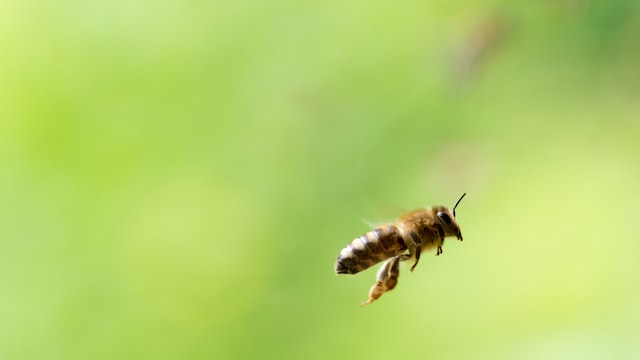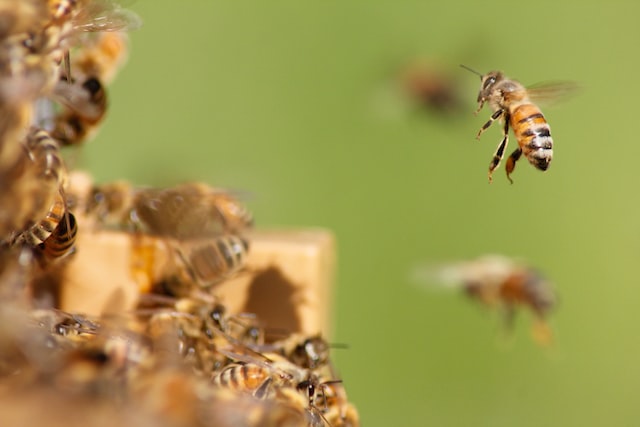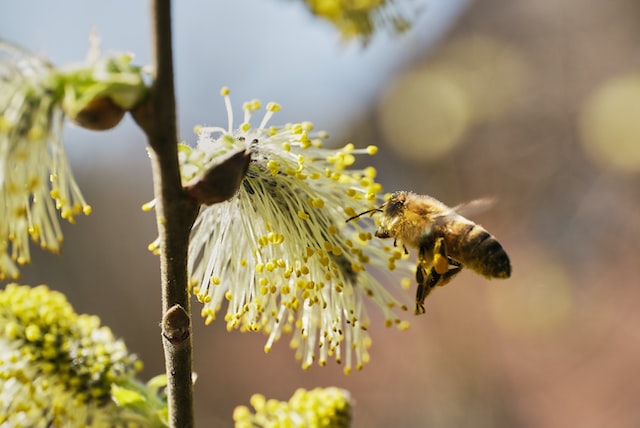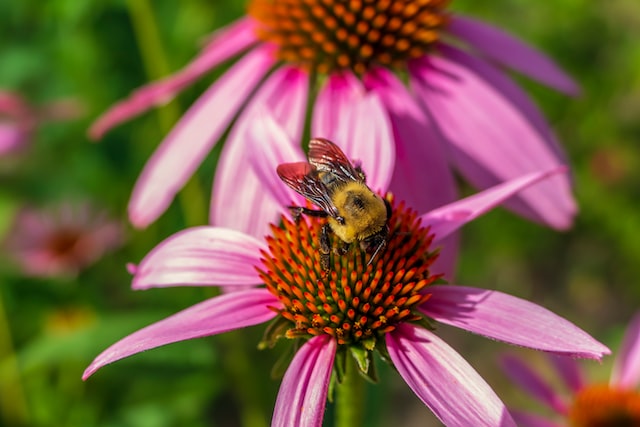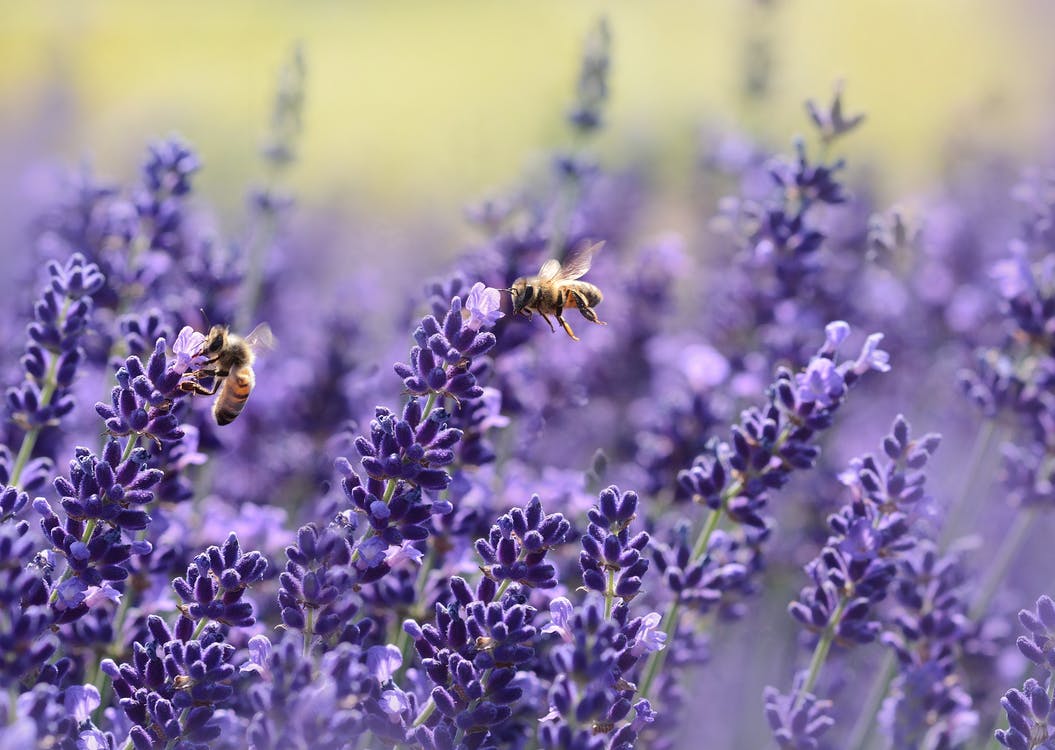Pollen, nectar, and water are the primary products that bees need to thrive, and you’ll most likely have already seen busy bees collecting them for their hive. This is one of the important parts of these insects’ day, especially for worker bees. They carry the hefty responsibility of flying long distances and finding and foraging for food if the sources are not nearby. But how much area do they really cover? How far do they travel to and from the hive? We got all the answers, even on other related questions. Read below to find out more.
Why Do Bees Leave the Hive in the First Place?
You might be thinking about why bees need to leave the hive when they have lots of reserve honey in the first place. Well, bees need pollen and nectar to make honey. The catch is not all the work is done by all bees. Bees have specific roles inside colonies, all playing an integral part in keeping the hive alive.
First, there’s the queen bee – the heart and soul of the colony. She only leaves the hive once in her life, during her maiden flight. After that, her main task is to lay all the eggs (about 2,000 per day!), which hatches to replace old dying bees and increase the colony’s population. Her average productive lifespan is two to three years, producing over 1 million offspring. As the queen bee ages, her productivity declines, but she can live up to 5 years.
Next are the drone bees. Drone bees are typically male honey bees. They don’t know how to gather pollen or nectar as their drone’s only responsibility is to mate with the queen. Afterward, they die. If they don’t accomplish their task, worker bees banish them from the hive, and they will perish from cold or starvation as they are unable to feed without the assistance of the worker bees.
As you already know, the worker bees are the last type of bee in the colony. While they are the smallest bee, they act as the lifeblood of the hive. Worker bees stay indoors for the first few weeks but soon mature and take on the crucial task of foraging for food. Their population is the highest, and their work is vital in keeping the hive thriving and running.
Unlike queen bees, worker bees’ lifespan is only about one to two months. In the summer months, they have to continue grinding it out daily to gather pollen and nectar. If not, they won’t be able to meet the increasing food requirements of the growing colony.
They won’t have a rest day, as the honey has to be made during the exhausting pollen-conducive season. It’s no wonder that they become very agitated when someone tries to steal their fruit of labor!
When winter comes, there won’t be flowers outside. Not to mention that the freezing weather also makes it impossible for these insects to fly. With that, making and storing honey makes an utmost need for bees to go outside in order to survive the harsh months.
How Far Do Bees Travel To and From the Hive?
Depending on the availability of food and other conditions, worker bees can fly as far as 7 kilometers (5 miles) to search for food, covering a search area of over 100,000 acres.
While worker bees don’t mind traveling very far for the benefit of the colony, rarely do they need to go that far. That’s because general foraging areas are usually found within a 3-kilometer (2 miles) radius from the hive.
Once worker bees find an ample source of food, they will exhaust it and make several trips to that location. On average, worker bees travel an overall distance equal to three trips around the globe.
However, actual scientific experiments have shown that worker bees who travel more distances have less efficiency in honey production. When worker bees go more than 6 kilometers (4 miles), they spend more energy and wear their wings out, shortening their lifespan. As such, less distance covered to get food means healthier bees and a better increase in the total hive weight.
Meanwhile, it’s also interesting to know some facts about their flight speed differences. When exiting the hive to forage, their normal speed ranges between 21 to 27 km/h (15-20 mph). As worker bees return and carry material, their speed decreases, and they only travel at 17 km/h (12mph).
How do Bees Manage to Find Their Way Back Home?
With bees reaching such distances, you might be wondering how they are able to navigate back to their hive. Well, these insects apparently have their own GPS-like system. As they leave the hive, they maintain a strict angle between the angle of their flight and the angle of the sun. Once they return, they just follow the same route in relation to the sun. Thus, allowing them to return safely back to the hive.
Initially, bees weren’t believed to communicate and understand location due to their small brains, but repeated experiments proved that otherwise. These insects can also identify their close surroundings and where they are. Combining their memory of the environment and sunlight navigation makes it infeasible for bees to get lost. Indeed, they are not only industrious but are intelligent, too!
How Far Can Bees Chase You?
As we’re talking about distance, let’s go on and know how far bees will chase you. Bees will sting if they perceive you as a threat to their hive and to defend their precious honey.
African bees, which are far more defensive than other types of bees, will chase a victim up to 400 meters. Meanwhile, normal bees are smart enough not to tire themselves in a long, endless chase. While they may be aggressive at first, they’ll be happy to stop pursuing you after reaching about 30 meters.
Takeaway
Bees are amazing creatures that devote their energy to traveling great distances not minding the various threats outside just to forage for food and help their colony to survive. If ever you encounter a bee, remember all their efforts and don’t hurt or kill them. Allow them to safely return to their hive, which they still need to travel a few kilometers away.

